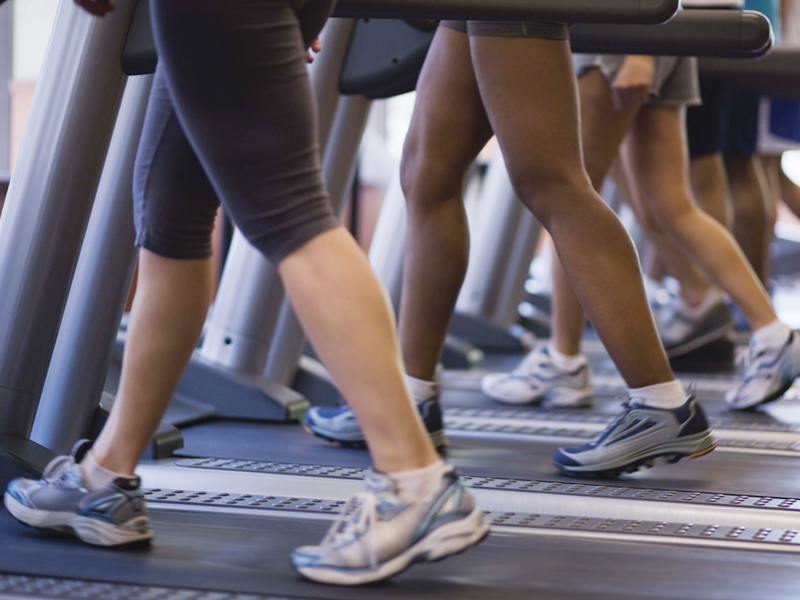Delaware is known as a mild state when it comes to winter weather, and for the most part runners and walkers are able to keep their workout regime consistent throughout the winter. This past week, the temperatures dipped into the single digits, and many runners, I would assume, went to plan B - the indoor workout. My friend Vicki Huber-Rudowski of the News Journal once wrote a beneficial piece on pros and cons of treadmill running, and this week I will look at two other sources of indoor workouts.
Treadmill running
Without a doubt, the treadmill is the most popular piece of equipment for indoor workouts. Many prefer it to outdoor workouts for reasons of safety, convenience and the ability to control and calibrate different workouts. Secondly, the treadmill has more give than concrete or asphalt, and as a result you will feel less pounding on the legs. Lastly, with music, an iPod or a TV close by, you will find the workouts go by much quicker than staring at a wall or mirror. As far as price, well, you get what you pay for. The more you put into it, the better product you have.
Pool workouts
One of the absolute best forms of indoor exercise is pool running. My favorite workouts in college were in the pool. Any runner who has experienced any type of injury has probably found himself or herself working out in the pool. Running in deep water while wearing a vest or belt makes for a non-impact activity. It has become a saving grace for runners with lower leg problems. Working on your form is a great item to focus on when water running, but don’t expect your heart rate to get as high as it would during a regular workout, and don't expect the same intensity and aerobic benefit as on land. The other issue is finding pool time. “Hey, where is that pool that Cape residents were supposed to build years ago?”
Elliptical trainer
The last indoor workout I will talk about and one of the most popular in the last three years is the elliptical trainer. The selling point is that you get a workout that is both non-impact and therefore easy on the joints, and weight-bearing, which can help keep bones strong. The elliptical trainer is a great running alternative if you have a heel or foot injury, such as plantar fasciitis, something to which I can relate quite well.
If running outside is your ticket regardless of the weather, remember to wear the proper clothing, stay away from ice and run defensively while giving yourself extra time on the roads.
Dressing for winter weather
We have had a couple looks at some cold weather this winter, but according to the experts, more cold and some snow are on the way. Not great news for the runners in the area who are trying to log the extra winter miles before they adjust for the racing season. Mother Nature can make it tough on runners and even tougher on runners who have a streak of training every day. I never really kept track of streaks. I ran hard when I needed to and took off when my body told me to. My friend Chico Barranco, years ago, kept a streak going by running 300 laps around his basement water heater, while other longtime running friends of mine like Bob Porter, Doug White, Craig Dayton, Reuben Beauchamp, Breck Vanderwende, Alan Quillen, Larry Windsor, Jack Powell, and Dr. Lee Masser have all had crazy stretches of training where Mother Nature could not stop them for months and even years when they were in the running zone. I do believe John Wolff of Virginia, a former frequent racer with the Striders, still has a streak of running every day dating back to I don’t know when.
Many runners have their own pros and cons regarding dressing for an outside winter run, and here is my take on the whole layering mind-set. There are three important layers when it comes to cold-weather running: A base layer, a mid layer and an outer layer. A base layer of snug, wicking material, such as polypropylene, polyester, thermal or wool. I am sure almost all runners own a dry-fit piece of clothing. A mid layer of looser material that carries moisture from the base layer, such as down, polyester or fleece. And an outer layer to block wind and allow moisture to escape, such as Gore-Tex or nylon material for warmer days. Gore-Tex suits are high-dollar items, but well worth it on a cold winter morning.
A good rule of thumb I have always used is to underdress rather than overdress. Your body will warm up in the first mile, and many times you find yourself peeling clothes off toward the end of the run.
























































